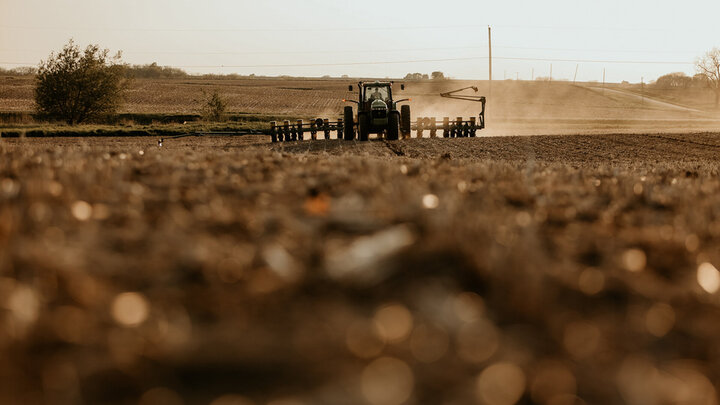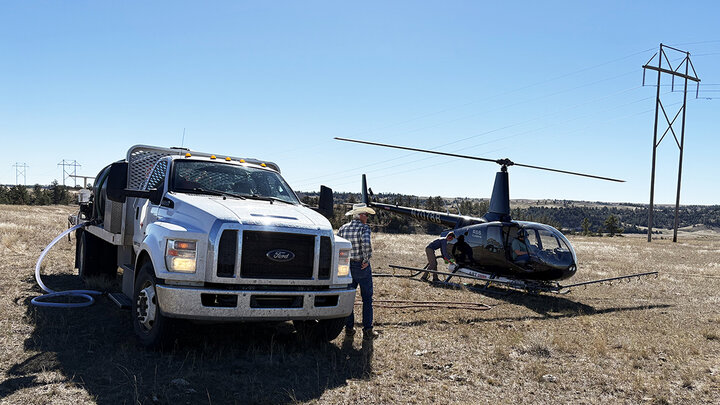Original content created by Dr. Jim Stack, former UNL Extension Plant Pathologist currently Kansas State University Extension Plant Pathologist. Content edited and approved by Dr. Tamra Jackson, UNL Extension Plant Pathologist.
Pathogen
Puccinia polysora Schwein. Fungal structures include, hyphae, urediniospores (produced within uredinia), and teliospores (produced within telia). As the season progresses, both urediniospores and teliospores can be produced in the same rust pustule. The asexually produced urediniospores are dispersed long distances and are responsible for the spread of rust from the deep south to the Northern Great Plains in years where epidemics occur. Teliospores are not important in disease development.
Southern rust occurs commonly in the southeastern United States and periodically throughout the rest of the corn belt. This pathogen does not overwinter in Nebraska. Disease occurrence in Nebraska is dependent upon wind dispersal of urediniospores from southern states in early to mid-July. Several different races of the pathogen exist.
Videos:
Identifying Rust Diseases of Corn

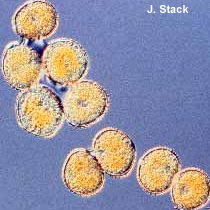


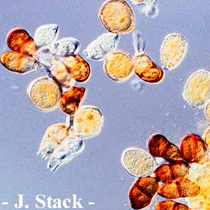
Disease Symptoms
Early lesions on leaves are small and circular-to-oval, often with a prominent light green to yellow halo. As lesions mature, the fungus erupts through the leaf surface (epidermis. Light orange to cinnamon-red pustules (image) are the characteristic symptom on leaves; urediniospores that rub off on fingers are what impart the color to the lesion. Southern rust lesions are usually smaller than common rust lesions; common rust lesions are usually more elongate than circular. Unlike Common Rust of Corn, lesions of southern rust develop primarily on the upper leaf surfaces. Lesions develop on stalk, husk, and leaf sheath tissues as well. Under favorable weather conditions, leaves can be covered with lesions resulting in a leaf blight. Spores are wind-blown with new infections occurring every 7 days. As the season progresses, black teliospores are produced in a ring around the lesions.


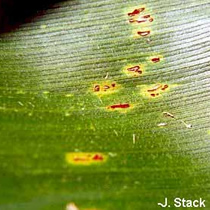
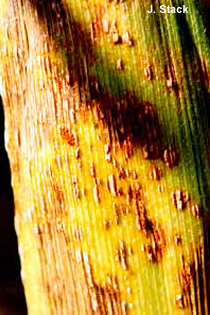

Favorable Environmental Conditions
Southern corn rust has been confirmed in counties highlighted in red on the Corn IPM map.
High temperatures (80°-90° F) and high humidity favor disease development.
Management
Genetic Resistance
Resistant varieties are the most cost-effective means to manage southern rust in field corn. In seed production fields, foliar fungicides may be cost-effective if southern rust is severe. Consult your seed dealer to determine the best hybrids and inbreds for your area.
Chemical/Biological Control
Foliar fungicides can be effective in managing southern rust and numerous products are labeled for use.
Links
For additional information, see the UNL Extension NebGuide, Rust Diseases of Corn in Nebraska (G1680).




